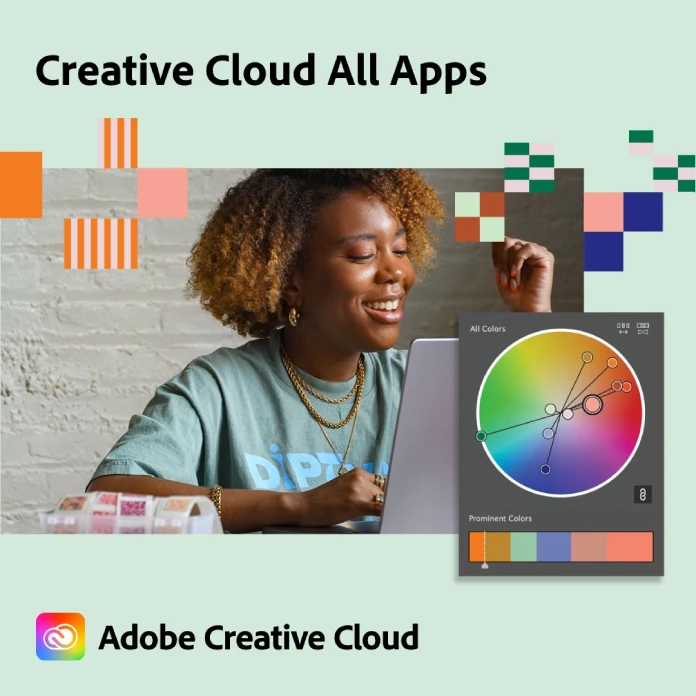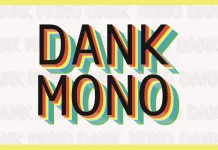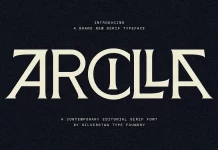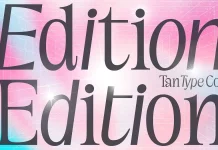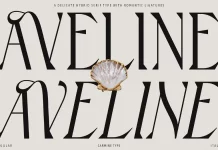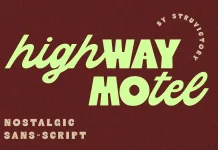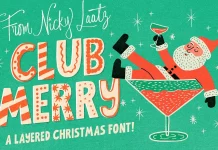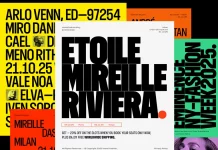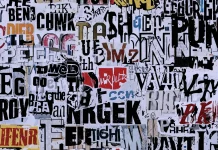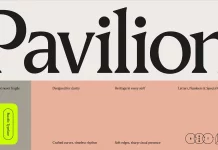This post contains affiliate links. We may earn a commission if you click on them and make a purchase. It’s at no extra cost to you and helps us run this site. Thanks for your support!
The TOMO Ratio Font is a Bauhaus-inspired Typeface, Redefining Modern Design
Some typefaces simply display words. Others tell a story before you even read the first letter. The Ratio font family from TOMO Fonts falls decisively into that second category. It is a masterclass in design, a thoughtful conversation between the past and the future. This typeface doesn’t just sit on the page; it actively shapes the message with its unique character. Its growing popularity isn’t an accident. Instead, it’s a direct result of a brilliant fusion of historical respect and contemporary flair.
You can purchase the family from these platforms:
So, what is it about the Ratio font that captures the attention of designers and brands around the world? This is not just another geometric sans-serif. It is a carefully constructed tool for visual communication. It merges the disciplined, clean functionalism of the Bauhaus movement with a playful, almost sculptural quality. Let’s explore the elements that make this typeface a truly standout choice for any creative project.

You can purchase the family from these platforms:
The Soul of the Design: What is the Ratio Font?
At its core, the Ratio font is a geometric sans-serif. This means its letterforms are built from simple, clean shapes like circles, squares, and triangles. You can see this legacy clearly. It pays homage to iconic predecessors, most notably the structured aesthetics of the Bauhaus school and the distinct lowercase forms of Futura. These influences give it an immediate sense of clarity and modernism.
However, calling it just another Bauhaus-inspired font would be a disservice. TOMO Fonts did not simply replicate the past. Instead, they used it as a launchpad. The Ratio font takes that familiar, comforting structure and injects a new personality into it. The result is a typeface that feels both timeless and exceptionally current. It’s a workhorse font with the soul of an art piece. This unique balance is precisely why it resonates so strongly in today’s design landscape.
A Defining Feature: Unpacking Those Captivating Inktraps
Let’s talk about the element that gives the Ratio font its signature look: the pronounced inktraps. Historically, inktraps were a purely functional feature in typography. When printing on absorbent paper, ink would naturally spread, or “bleed,” at the corners of letters. This could make sharp angles look soft and muddy. To counteract this, typographers cut tiny notches into the corners. When the ink bled, it would fill these little reservoirs, preserving the letter’s intended sharp appearance.
In the digital age, this functional need has largely vanished. Yet, the Ratio font reimagines inktraps as a stylistic choice. The inktraps here are not subtle; they are deep, deliberate, and celebrated. They create a fascinating visual rhythm throughout the text.
What does this mean for your designs? On-screen, these inktraps give the font a distinctive, technical, and slightly futuristic look. They add a layer of detail that draws the eye in, especially at larger sizes in logos or headlines. Consequently, they give the typeface a unique texture and prevent it from feeling sterile, a common pitfall for many geometric sans-serifs. It’s a brilliant example of turning a historical solution into a modern stylistic statement.
A Masterclass in Subtlety: Spurless Characters
Another key detail that elevates the Ratio font is its extensive use of spurless characters. A “spur” is the small finishing stroke or tail you often see at the bottom of a letter, like on the curve of a lowercase ‘a’ or ‘u’. The Ratio font deliberately removes these spurs.
This might seem like a minor detail, but its impact is significant. Removing the spurs enhances the font’s clean, geometric purity. The letterforms become smoother and more streamlined. This design choice works in perfect harmony with the pronounced inktraps. While the inktraps add complexity and visual interest, the spurless characters provide a counterbalance of elegant simplicity. This thoughtful interplay ensures the font remains balanced and highly readable, never feeling overly decorative or cluttered. It’s a testament to the idea that great design is often about what you choose to leave out.
The Ratio Font Family: A Spectrum of Expression
Versatility is a non-negotiable trait for any serious designer, and the Ratio font family delivers this in spades. It comes in seven distinct weights, ranging from a delicate Thin to a powerful Black. This comprehensive range provides a complete typographic toolkit for any project.
Think about the possibilities this unlocks.
- Thin & Light: Perfect for elegant headlines, sophisticated subtext, or minimalist branding where you need a whisper of style.
- Regular & Medium: The workhorse weights. They are exceptionally readable for body copy on websites, in brochures, or for UI/UX design. The clarity of the Ratio font makes it a superb choice for user interfaces.
- Bold & Black: These weights make an undeniable impact. They are ideal for powerful calls to action, impactful logos, and attention-grabbing posters.
Having this full spectrum allows for creating a rich visual hierarchy without ever needing to introduce a second typeface. This consistency strengthens brand identity and creates a more cohesive and professional design.
Unlocking Creativity with OpenType
Beyond its foundational design, the Ratio font offers another layer of creative control through its OpenType stylistic sets. What are these? Essentially, they are built-in alternate characters that you can easily activate in most modern design software.
These alternate glyphs allow you to fine-tune the font’s personality to perfectly match your project’s tone. Perhaps you need a slightly different ‘a’ for a logo or a unique ampersand to add a touch of custom flair. The Ratio font provides these options, transforming it from a static tool into a dynamic creative partner. This feature empowers designers to add subtle, bespoke touches that make their work truly unique, moving beyond the default settings to craft something personal.
Where Does the Ratio Font Shine? Practical Applications
The true test of any typeface is its performance in the real world. Because of its unique blend of clarity, personality, and versatility, the Ratio font excels in a wide variety of applications.
- Branding and Logo Design: Its distinctive inktraps and clean geometric forms make the Ratio font for logo design an excellent choice. It creates logos that are memorable, modern, and scalable.
- UI/UX and Web Design: The font’s high readability, even at smaller sizes, makes it a top contender for user interfaces on apps and websites. The different weights are perfect for distinguishing between headers, body text, and button labels.
- Editorial and Print Design: In magazines, books, and reports, the Ratio font provides a reading experience that is both comfortable and visually engaging. Its bolder weights create stunning headlines that contrast beautifully with its clean body copy.
- Packaging and Signage: Its clarity and strong character ensure that messages are conveyed effectively from a distance, making it a reliable choice for any physical media.
The Ratio font is more than just a collection of letters. It is a thoughtfully designed system that respects typographic history while pushing confidently into the future. It provides the perfect balance of function and expression, making it a powerful asset for any designer looking to create work that is clean, contemporary, and compelling. It’s a font that doesn’t just ask to be seen; it deserves to be examined.
You can purchase the family from these platforms:
Feel free to find other trending typefaces here at WE AND THE COLOR.


